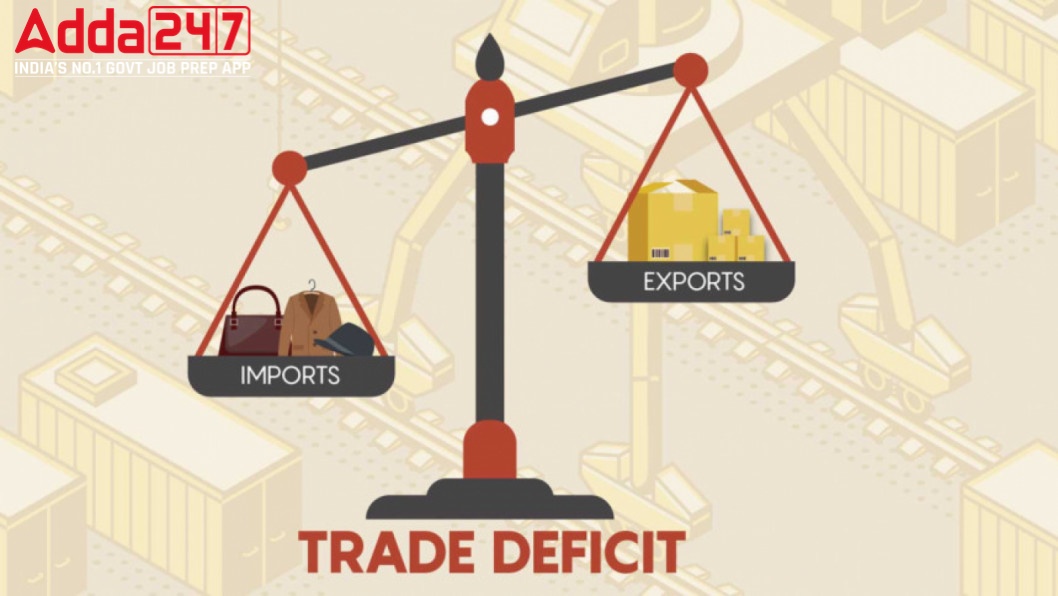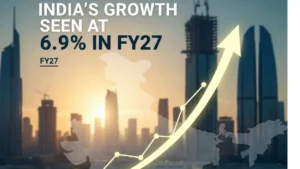India’s current account deficit (CAD), a key indicator of balance of payment of a country, has widened to $23.9 billion, which is 2.8% of the GDP, in the first quarter of the current financial year 2022-23. This is up from $13.4 billion (1.5% of the GDP in Q4 of FY2022) and a surplus of $6.6 billion (0.9% of the GDP) a year ago period of Q1FY22, according to the data released by the RBI’s Balance of Payments.
Buy Prime Test Series for all Banking, SSC, Insurance & other exams
India’s Trade Deficit Recent Trade:
The widening trade deficit, or the gap between the value of imports and exports, puts pressure on the balance of payments. India’s trade deficit during the first five months of 2022-23 has widened to $124.5 billion from $54 billion in the previous corresponding period. In the entire fiscal 2021-22, the trade deficit was at $189.5 billion. CAD is expected to remain within 3% of the GDP in 2022-23 as against 1.2% during the last fiscal, an article published in the RBI bulletin said earlier.
Meanwhile, India Ratings had expected CAD to hit a 36-quarter high of 3.4% of GDP or $28.4 billion in the June quarter, against a 0.9% surplus a year ago. In the March 2022 quarter, the deficit was a moderate 1.5% or $13.4 billion, while in Q1FY22 the current account surplus was $6.6 billion or 0.9% of GDP when the country was hit by the second wave of the pandemic, according to the agency.
Key Issues: Rupee & Oil Prices:
The rupee has weakened more than 7% since the beginning of the year as foreign investors pulled out $30 billion from equities over worries that the trade deficit could worsen, pushing the central bank to defend the currency with its foreign reserves. But the worst may be yet to come. Prices of crude oil – India’s biggest import – were expected to stay above $100 a barrel this year as tight supply overshadows demand concerns in a difficult global environment characterised by high recession risk. With inflation expected to remain above the top end of the target range, the RBI is left with few options other than to raise interest rates by another 60 basis points by end-March, according to a Reuters poll. However, that will be not enough to stem the rupee’s losses as some major central banks were expected to deliver nearly that much in a single meeting.
What Is Balance Of Payments:
The balance of payments (BOP), also known as the balance of international payments, is a statement of all transactions made between entities in one country and the rest of the world over a defined period, such as a quarter or a year. It summarizes all transactions that a country’s individuals, companies, and government bodies complete with individuals, companies, and government bodies outside the country.
Key Points:
- The balance of payments includes both the current account and capital account.
- The current account includes a nation’s net trade in goods and services, its net earnings on cross-border investments, and its net transfer payments.
- The capital account consists of a nation’s transactions in financial instruments and central bank reserves.
- The sum of all transactions recorded in the balance of payments should be zero; however, exchange rate fluctuations and differences in accounting practices may hinder this in practice.




 India’s Growth Seen at 6.9% in FY27 Desp...
India’s Growth Seen at 6.9% in FY27 Desp...
 Which Glacier is the Source of the Brahm...
Which Glacier is the Source of the Brahm...
 What is the Full Form of EDP? Know Every...
What is the Full Form of EDP? Know Every...







